
Table of Contents
The Byzantine Empire was one of the richest, most powerful, and longest-lasting empires in human history. So, it’s hardly a surprise that they left their mark in various areas of culture, including jewelry as well as precious metals and gemstones. Let’s explore below exactly what Byzantine jewelry is and what impact it had on today’s jewelry market and trends.
History of Byzantine Jewelry
Byzantine jewelry is characterized by a remarkable mixture of ancient Roman elements intertwined with Middle Eastern influences and a major focus on gold, scale, and colorful gemstones. To fully understand the nature and history of Byzantine jewelry, however, let’s quickly see how its creators – the jewelers of the Byzantine Empire – came to be.
A Brief Overlook of the History of the Byzantine Empire
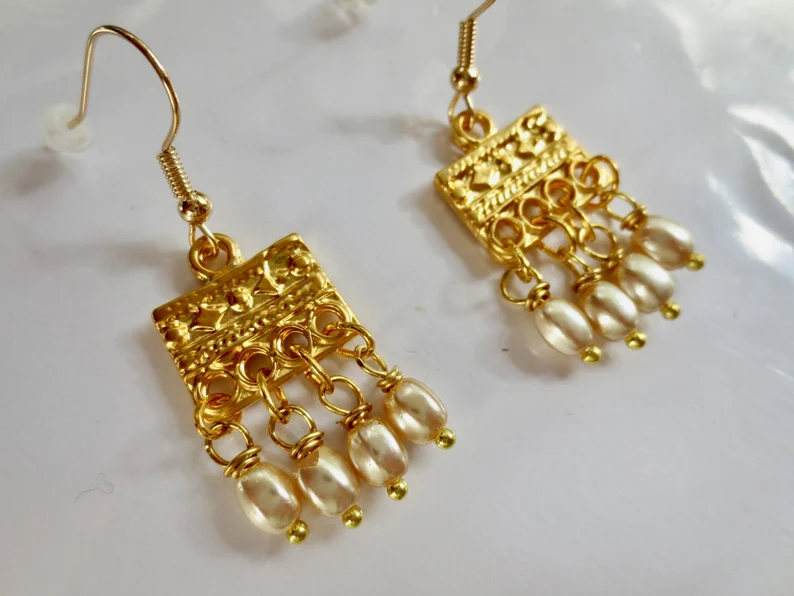
The Byzantine Empire, or, as it was known at the time – the Eastern Roman Empire – was the natural continuation of the Roman Empire. Whereas the western part of the Roman Empire, as well as Rome itself, started to decline after the first couple of centuries of the new millennium, the eastern half of the Empire not only lasted but flourished for centuries to come.
The official “start” of the Eastern Roman Empire was 330 AD when the Roman Emperor Constantine officially split the empire into two parts. He did that 6 years after he had proclaimed the ancient city of Byzantium as the new capital of the Eastern Roman Empire and renamed the city Constantinopole, after himself.
In doing so, Constantine left Rome and the western parts of the former empire in the hands of Honorius, the son of Emperor Theodosius and grandson of Constantine himself. The Eastern Roman Empire, on the other hand, was given to Honorius’ brother, Emperor Arcadius.

The split further accelerated the fall of the Western Roman Empire as it effectively cut it off from the incredibly profitable provinces in the Balkans, Anatolia, the Middle East, and Egypt. For the Eastern Roman Empire, on the other hand, the split was incredibly beneficial as it meant it could keep all its riches for itself and not maintain the declining west.
From that point on, the Eastern Roman Empire existed for over a thousand years up until 1453 AD during the reign of Emperor Constantine XI, when Constantinople was conquered by the rising Ottoman Empire.
As a final piece of historical trivia, we use the names Byzantine Empire and Eastern Roman Empire interchangeably because they mean the same thing. At the time, no one used the names “Byzantine Empire” or “Byzantium” because Emperor Constantine had left those behind by renaming the city of Byzantium Constantinople (today it’s Istanbul).
For over a thousand years, while the empire thrived, it was called Eastern Roman Empire or simply The Roman Empire. Historians started using the term Byzantine Empire centuries after its fall after the former name of Constantinople, simply to make it more easily distinguishable from what people traditionally understand as The Roman Empire.
All this is to make it clear that when we talk about Byzantine jewelry, we’re talking about the style of jewelry made during the time of the Eastern Roman Empire – not in the period preceding the city of Byzantium, prior to 330 AD.
How Does the History of the Byzantine Empire Reflect on its Jewelry?
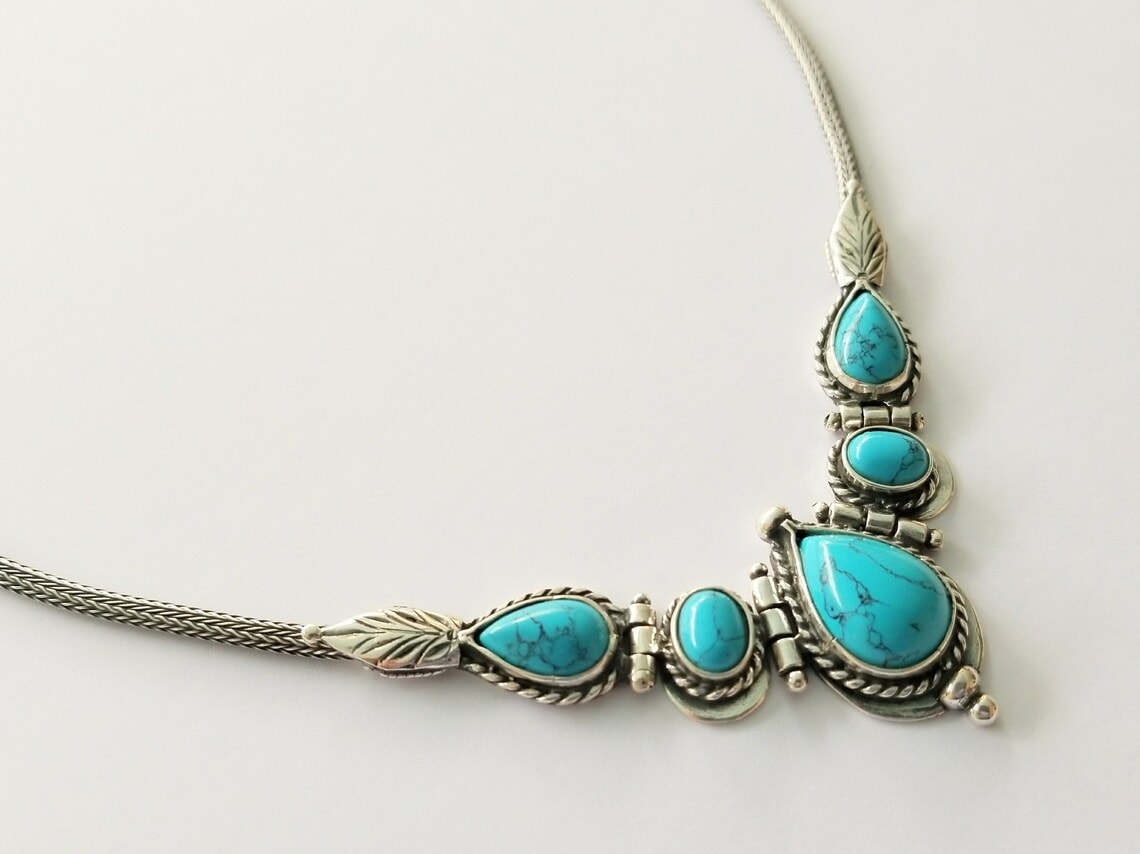
In more ways than one, the Byzantine or Eastern Roman Empire was the bridge between the east and the west during the sunset of the ancient world and the Middle Ages. And that was very much reflected in its jewelry.
In the beginning, Byzantine jewelry was a direct continuation of the old Roman jewelry and was used primarily as a status symbol in higher society. As time went on, however, and the Byzantine Empire grew in riches, Byzantine jewelry started becoming more and more extravagant.
The high-yield gold mines in the heart of the empire – the Balkans and Anatolia – meant that Byzantine jewelry became increasingly gold-focused with an emphasis on not only craftsmanship quality but also sheer quantity. Heavy and detailed gold chains, thick golden rings, and elbow-long golden bracelets, all of which were abundantly covered with colorful gemstones, became symbols of Byzantine wealth and dominance.
Jewelry as a Status Symbol
Jewelry’s importance as a status signifier became so prominent, that, in the early 6th century, Emperor Justinian set up laws regarding the jewelry, as detailed in the Justinian Code. According to those rules, emeralds, sapphires, and pearls were prohibited for everyone but the emperor himself, as they were to be his status symbol. Golden rings and other golden jewelry, however, were allowed for every free man.
Such restrictions were established not because of an insufficient supply of pearls and gemstones but simply because that’s how much of a status symbol jewelry was in the Byzantine Empire.
Middle Eastern and Asian Influences
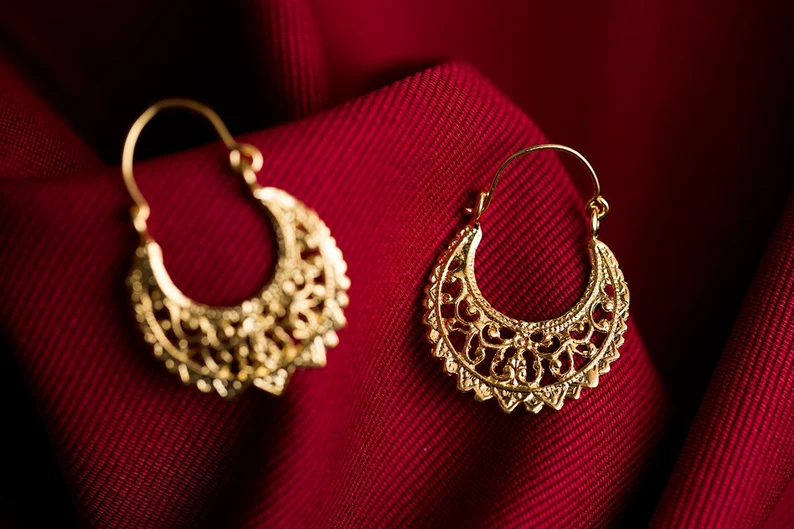
In later years, influences from the Middle East and the rest of Asia continued to seep into the empire – together with pearls, gemstones such as beryl, corundum, and garnets became more and more popular as they were easily accessible through the trade routes coming from Persia and India together with silk and spices.
And even though the territory of the Byzantine Empire was in a near-constant state of flux over the years – such as losing the Balkans and most of their gold reserves and mines to the Bulgarian kingdom, for example – the Byzantian Empire’s wealth continued to dwarf that of most of its neighbors.
More than that, Byzantine jewelry and other fashion trends quickly spread all across the surrounding world – north and west into Europe, east and south into Asia, as well as forward in time into the Ottoman Empire which took over the region.
Because of that, pretty much any discussion about later jewelry styles and trends across the Old World is affected in one way or another by the influence of Byzantine jewelry and fashion.
Characteristics of Byzantine Jewelry
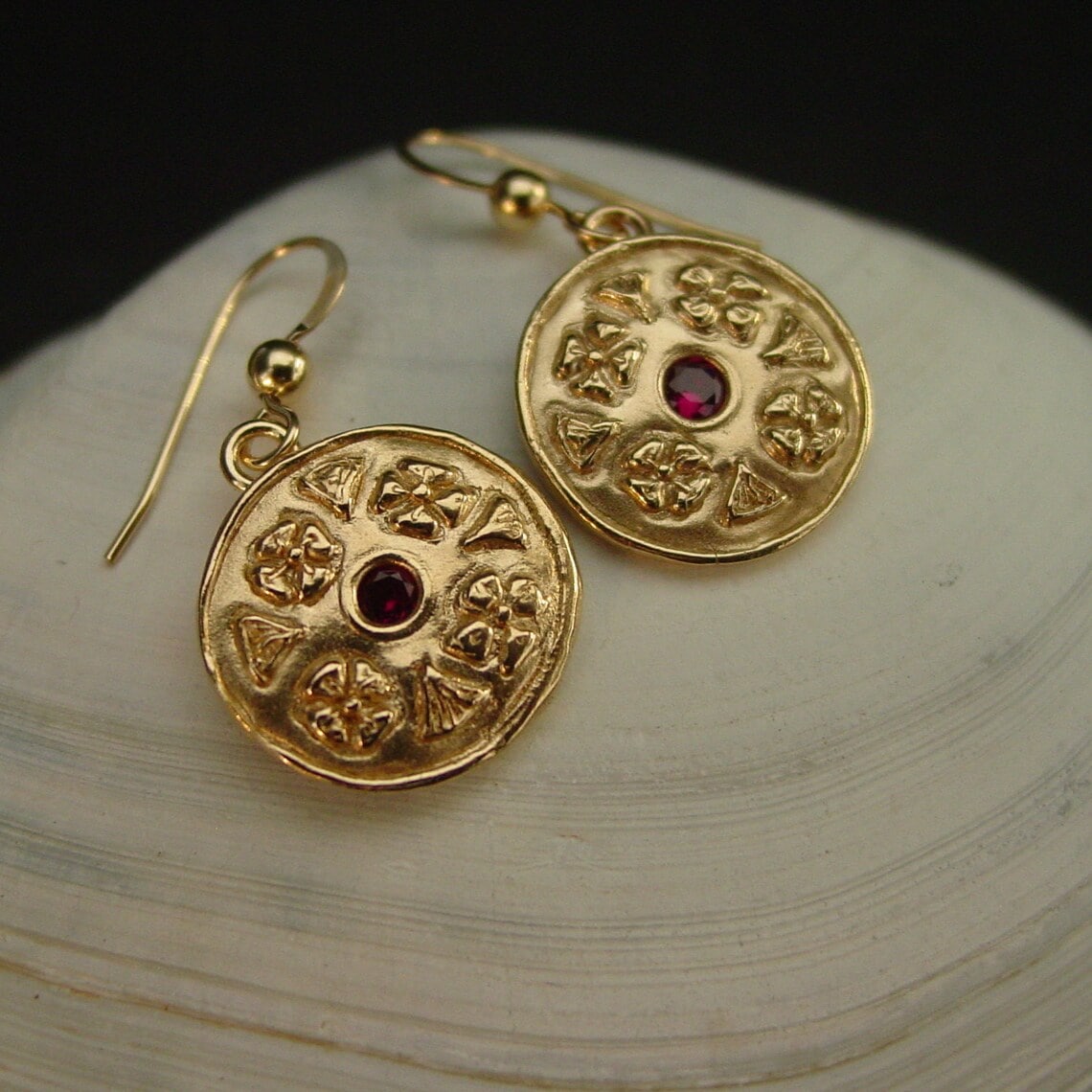
From its history, we can see that Byzantine jewelry is characterized by a strong focus on size, color, and extravagance.
Jewelry pieces of all types were expected to be as big, heavy, and wide as possible – the more gold was poured into an individual necklace chain, bracelet, ring, or earring, the more prestigious it was, and the higher the status and wealth of the wearer.
Regardless of how valuable the gold and silver that went into the jewelry, each piece was also expected to be covered with as many pearls and gemstones as possible to both signify the wearer’s wealth and to make the jewelry piece colorful and impressive.
When there weren’t enough gemstones available, Byzantine jewelers also used lots of enamel (colorful allochromatic glass) to further make their jewelry colorful and beautiful. Such enamel jewelry wasn’t seen as low quality or “fake” – golden jewelry with artistically crafted enamel was still very liked and sought-after both for its value and for its artistic qualities.
Types of Byzantine Jewelry
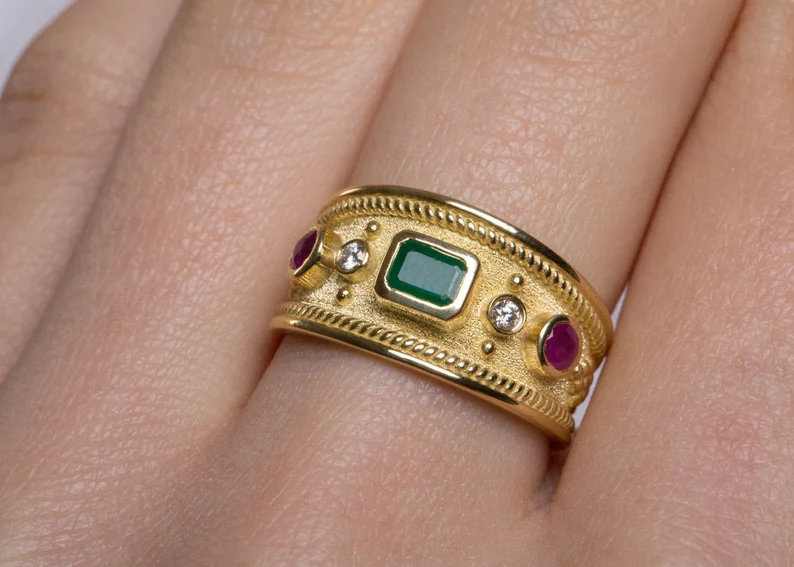
Byzantine nobility was so invested in trying to decorate every inch of their body with the jewelry that they used every possible type of jewelry their artisans could think of – rings, necklaces, bead chains, earrings, brooches, pendants, bracelets, tiaras, circlets, and crowns, as well as extravagant and detailed pectoral ornaments for the men, and even coin jewelry.
All these types of jewelry were crafted in various styles over the years, depending on which part of the empire they were coming from or which culture they were inspired by.
More often than not, the base of each jewelry piece was expected to be as large as possible and made of either gold or silver that was then covered with large gemstone cabochons set in rich collets. At the same time, Byzantine gem beads were also very popular – the jeweler would get as many large and colorful gemstones as was available and drill a thick golden wire through them.
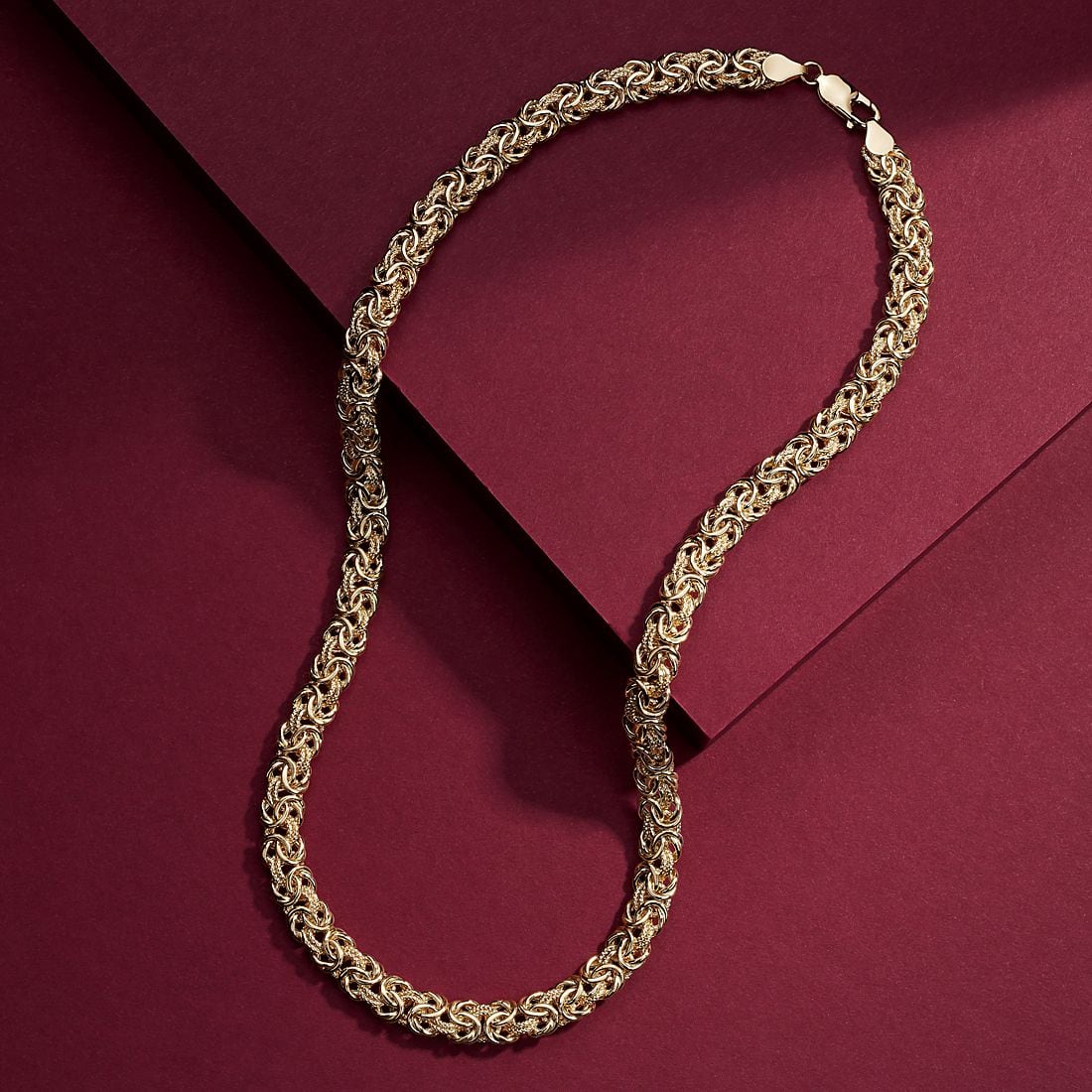
Another famous example is the Byzantine chain. Made out of gold, yellow, or a combination of both plus other metals, this chain is a popular design for both bracelets and neck chains. It’s characterized by a 4-in-1 linking structure, meaning that each link goes through 4 other links instead of just two as is usually the case.
This makes the Byzantine chain similar to the common box chain type, but a box chain’s links all point in one direction whereas in a Byzantine chain they change directions, giving it a more captivating look. This chain style is still in vogue.
Where Can I Find Byzantine Jewelry
When we talk about Byzantine jewelry, we’re not only talking about the historic jewelry artifacts found from 6 centuries ago – we’re also talking about contemporary jewelry made in the style of traditional Byzantine jewelry.
Such modern pieces can be found all over the internet and in many big brick-and-mortar jewelry retailers. We recommend starting your search on Etsy to get an overview of the styles available and the general prices. You may even find impressive vintage pieces here.
Of course, you will need to assess the quality and value of each piece separately – just because a particular ring or necklace is made in the style of Byzantine jewelry doesn’t mean it’s well made.
Always purchase from a reputable seller with solid after-sales policies. If purchasing on Etsy, check out our article on the subject.
Wrapping Up
Byzantine jewelry, both historically and today, is among the most flamboyant and grandiose types of jewelry in the world. This goes against certain modern trends of cleaner and minimalist designs, but for those that look for color, value, volume, and prestige in their jewelry, the Byzantine style is worth considering.









